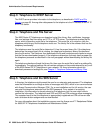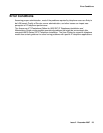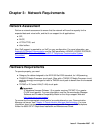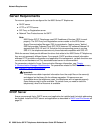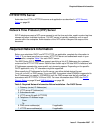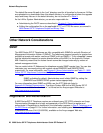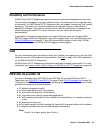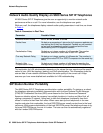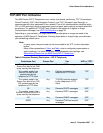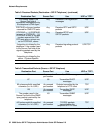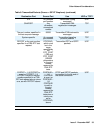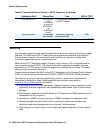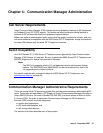
Network Requirements
30 9600 Series SIP IP Telephones Administrator Guide SIP Release 2.0
Network Audio Quality Display on 9600 Series SIP IP Telephones
All 9600 Series SIP IP Telephones give the user an opportunity to monitor network audio
performance while on a call. For more information, see the telephone user guide.
While on a call, the telephones display network audio quality parameters in real-time, as shown
in Table 4
:
The implication for LAN administration depends on the values the user reports and the specific
nature of your LAN, like topology, loading, and QoS administration. This information gives the
user an idea of how network conditions affect the audio quality of the current call. Avaya
assumes you have more detailed tools available for LAN troubleshooting.
SIP Station Number Portability
The 9600 Series SIP IP Telephones provide station number portability. On startup or a reboot,
the telephone attempts to establish communication with its home Personal Profile Manager
(PPM)/SIP Enablement Services (SES) server based on the User Name and Password.
Assume a situation where the company has multiple locations in London and New York, all
sharing a corporate IP network. Users want to take their telephone functionality from their
offices in London to their New York office. When users start up their telephones in the new
location and enter their credentials, the local SES/PPM server usually routes them to the local
call server. With proper administration of the local SES/PPM server, the telephone knows to try
its home SES/PPM server, the one in London. The user can then be automatically registered
with the London SES/PPM server.
Table 4: Parameters in Real-Time
Parameter Possible Values
Received Audio Coding G.711, G.722, G.726A, or G.729.
Packet Loss No data or a percentage. Late and out-of-sequence packets are
counted as lost if they are discarded. Packets are not counted
as lost until a subsequent packet is received and the loss
confirmed by the RTP sequence number.
Packetization Delay No data or an integer number of milliseconds. The number
reflects the amount of audio data in each RTP packet.
One-way Network Delay No data or an integer number of milliseconds. The number is
one-half the value RTCP or SRTCP computes for the round-trip
delay.
Network Jitter
Compensation Delay
No data or an integer number of milliseconds reporting the
average delay introduced by the jitter buffer of the telephone.



